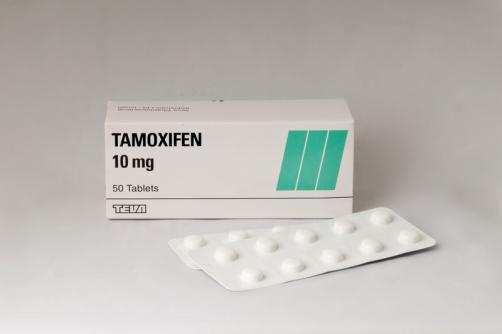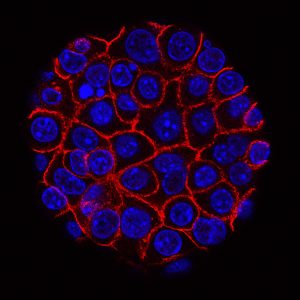
Tamoxifen found to reduce breast cancer rates by 30%
pharmafile | December 11, 2014 | News story | Manufacturing and Production, Medical Communications, Research and Development, Sales and Marketing | Arimidex, NICE, anastrozole, astrazenea, breast cancer, tamoxifen
A study from Queen Mary University has demonstrated that tamoxifen can reduce breast cancer rates by around 30% over 20 years – but severe side effects still remain.
The IBIS-I trial, funded by Cancer Research UK, examined the long-term risks and benefits of taking tamoxifen to prevent breast cancer in women at high risk of the disease – those aged 35-70 years old and with a family history in the area.
The women took either the drug or a placebo for five years and then had their health monitored after an average follow-up time of 16 years. Out of the 7,154 women in the study, 251 from the tamoxifen group developed breast cancer compared to 350 from the placebo group.
“Tamoxifen is a well-established and effective treatment for certain breast cancers, but we now have evidence of its very long-term preventive benefits,” says Professor Jack Cuzick, lead author and head of the Centre for Cancer Prevention at Queen Mary University of London.
Tamoixfen was discovered by AstraZeneca and marketed under the brand name Nolvadex until its patent expiry in 2003. It is now produced as a generic by Teva and several other smaller manufacturers.
“We hope these results will stimulate more women, particularly younger women, to consider treatment options for breast cancer prevention if they have a family history of the disease or other major risk factors.”
However Cuzick says he believes aromatase inhibitor drugs such as Arimidex by AstraZeneca (anastrozole) “should be the drug of choice” for post-menopausal women as they are “more effective than tamoxifen and have fewer side effects”.
In a previous IBIS trial, taking Arimidex for five years was found to reduce the chances of high-risk women developing the disease by 53 per cent.
One of the known side effects of tamoxifen, endometrial cancer, was 3.8 times more common in the tamoxifen group during the five years of treatment, and five women died from the disease compared to none in the placebo group. There was no increased risk in the follow-up period, however.
Tamoxifen also had a significantly lower benefit in women who took hormone replacement therapy during the five years of treatment, and did not reduce breast cancer-specific deaths.
“We will need to continue monitoring these women for a further decade to get a clearer picture of the impact of tamoxifen on death rates,” Cuzick adds. “Some of the side effects of tamoxifen are also cause for concern and need continued monitoring.”
NICE updated its guidance in 2013 to allow tamoxifen to be given to high-risk women as a preventative measure. The inclusion of Arimidex in these guidelines is also under consideration.
George Underwood
Related Content

NICE recommends migraine treatment for NHS use
The National Institute for Health and Care Excellence (NICE) has shared draft guidance recommending AbbVie’s …

FDA accepts BLA for AstraZeneca and Daiichi Sankyo’s datopotamab deruxtecan for breast cancer treatment
AstraZeneca and Daiichi Sankyo have announced that their Biologics License Application (BLA) for datopotamab deruxtecan …

GSK’s Jemperli recommended by NICE for endometrial cancer treatment
GSK has announced that the National Institute for Health and Care Excellence (NICE) has recommended …








